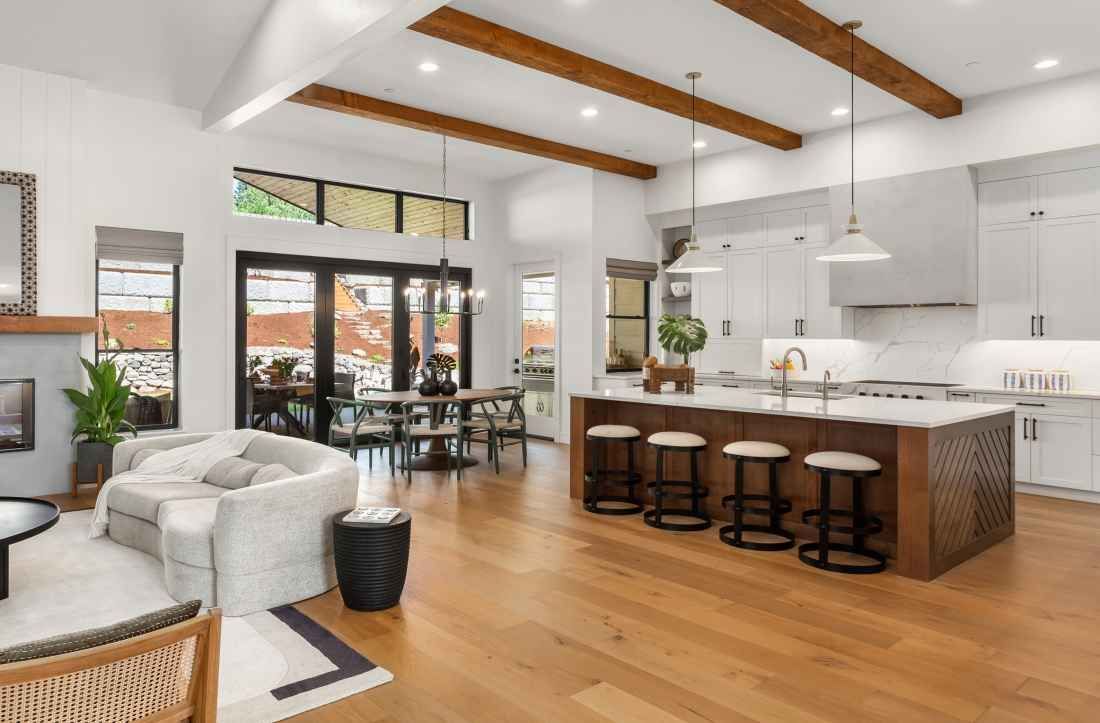
Key Takeaways
- Renewable energy sources, including solar and wind, are reshaping home energy use.
- Smart water conservation solutions are vital for responsible homeownership.
- Biophilic design connects people with nature while optimizing energy efficiency.
- Smart technology empowers homeowners to reduce energy waste seamlessly.
- Sustainable construction materials improve both environmental and indoor health.
Embracing sustainable living is transforming the way individuals design, construct, and maintain their homes. Today’s forward-thinking homeowners are looking beyond short-term trends, opting instead for eco-friendly choices that create lasting value, efficiency, and a positive impact on the planet. Whether you’re retrofitting your existing home or exploring a property with green features, partnering with local experts like Bend, OR, real estate experts Team Fitch Real Estate can help you discover properties that maximize both comfort and sustainability.
As the conversation around sustainability evolves, modern homes are increasingly shaped by practices that conserve resources, foster wellness, and save money. From investing in renewable energy to embracing natural design elements, today’s eco-friendly upgrades deliver substantial benefits—to the environment, your lifestyle, and your wallet.
Harnessing Renewable Energy
The adoption of renewable energy solutions is among the most notable trends in eco-conscious homeownership. Solar panels, once considered a luxury, have become increasingly accessible as technology improves and costs decline. In sunny regions, solar can generate significant—if not all—of a household’s electricity, often feeding excess power back to the grid. For areas with reliable wind, small-scale wind turbines can supplement solar output, especially during seasonal fluctuations. These renewable options not only trim monthly costs but also build energy independence and support a cleaner grid.
Water Conservation Techniques
Water conservation is at the forefront of sustainable living, particularly in drought-prone areas. Modern homes are designed or updated to include rainwater harvesting systems that capture rainfall for use in gardens, toilets, and even laundry. Low-flow fixtures on faucets, showers, and toilets significantly reduce water consumption without sacrificing performance, resulting in lower utility bills and less strain on municipal water supplies.
Advanced irrigation systems also utilize weather data and soil sensors to ensure landscaping receives the exact amount of water, automatically adjusting for rainfall or temperature changes. These smart upgrades help protect one of our most precious—and increasingly scarce—resources.
Biophilic Design: Bringing Nature Indoors
Modern biophilic design transforms indoor spaces by integrating natural materials, creating light-filled environments, and incorporating living plants. This approach, which hinges on our innate connection to nature, not only makes homes more visually appealing but is also proven to enhance well-being and productivity. Features such as large windows, skylights, and green walls enhance air quality and illuminate spaces with natural light, thereby reducing the reliance on artificial lighting and HVAC systems.
According to Architectural Digest, biophilic design is a movement that connects homeowners to nature through elements such as indoor plants, terraces, and gardens, enhancing mental and physical health. It’s a design philosophy that continues to gain traction as people seek healthier, more sustainable living environments. Many architects now see it as an essential part of modern homebuilding rather than just an aesthetic choice.
Smart Home Technology for Energy Efficiency
Smart home technology is redefining what it means to live efficiently. Devices such as smart thermostats, app-controlled lighting, and automated power strips enable homeowners to easily reduce wasteful energy consumption. These systems learn user habits, optimizing settings for maximum efficiency, such as adjusting heating and cooling while you’re away and automatically powering down unused electronics. According to Better Homes & Gardens, home automation can significantly cut energy use while keeping comfort intact. This seamless approach to eco-friendly living empowers families to shrink their carbon footprint and enjoy lower energy bill,s all without sacrificing convenience or comfort.
Sustainable Building Materials
Eco-friendly building materials set the stage for healthier homes and a cleaner environment. Bamboo, cork, and reclaimed wood offer durability and renewability, while recycled metal and concrete reduce the need for extracting new resources. These options are not only beautiful and robust but also meet increasingly strict building codes aimed at energy efficiency and waste reduction.
Prioritizing low-VOC paints and sealants when renovating or building further boosts indoor air quality, protecting residents’ health while creating inviting, toxin-free spaces. Homeowners and builders who invest in sustainable materials are making decisions that benefit families, communities, and the planet long term.
Green Roofs and Living Walls
Green roofs—lush, plant-covered layers built atop buildings—offer unique insulation, curb appeal, and critical stormwater management benefits. By absorbing rain and insulating living spaces, they cut heating and cooling costs while reducing urban heat. Vertical gardens or living walls improve indoor air quality, regulate humidity, and add a restorative, natural touch to interiors or facades.
These nature-based solutions are increasingly popular in cities, where green spaces are limited, underscoring their role in building more resilient and sustainable neighborhoods.
Urban Farming and Edible Gardens
Growing food at home—whether in a backyard, on a rooftop, or inside through hydroponic systems—continues to gain traction among homeowners. Urban farming cuts the environmental costs of food transportation and offers greater self-sufficiency and nutritional value. Even small herb gardens and vertical planters provide fresh produce, connect residents to the rhythms of nature, and foster stronger communities through the sharing of surplus.
Conclusion
Sustainable living in modern homes combines innovative technology, renewable resources, responsible water use, and natural design to promote healthy, efficient, and enjoyable living spaces. Prioritizing these trends benefits the environment and adds tremendous value to the property and lifestyle of every homeowner committed to a more thoughtful way of living.

